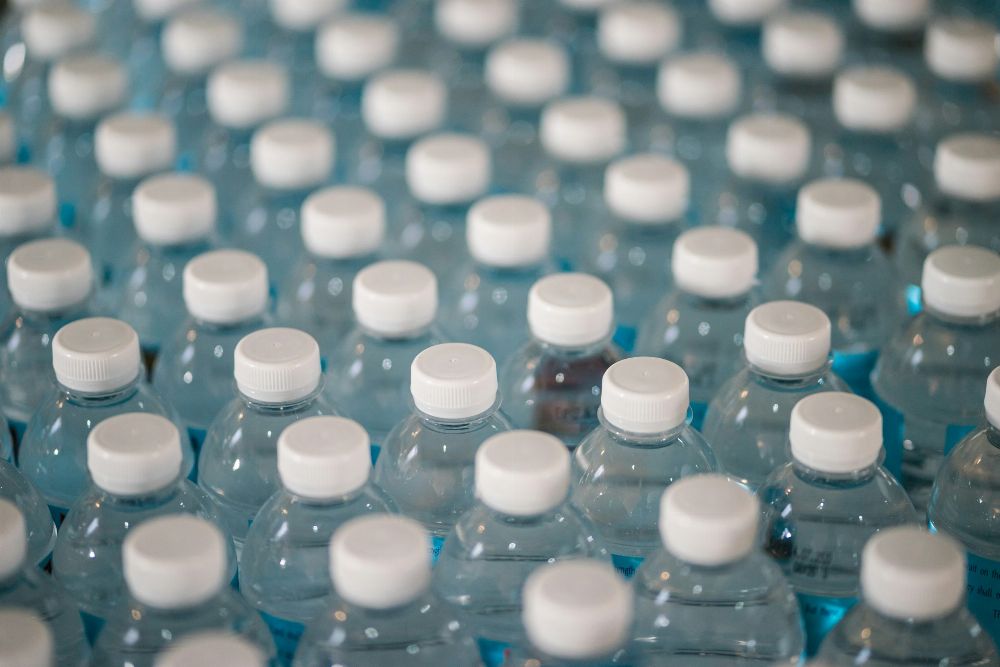Safety and Toxicity of Drinking Water – The Hidden Threats
 Water is fundamental to life, yet access to pure, uncontaminated drinking water is becoming increasingly difficult. Industrialization, agricultural practices, and human waste disposal have introduced a host of toxic substances into the water supply. Groundwater contamination, in particular, poses significant risks as it is a primary source of drinking water for millions of people worldwide. From heavy metals to pharmaceuticals and pesticides, our water is exposed to a myriad of toxic substances that can have severe health impacts over time.
Water is fundamental to life, yet access to pure, uncontaminated drinking water is becoming increasingly difficult. Industrialization, agricultural practices, and human waste disposal have introduced a host of toxic substances into the water supply. Groundwater contamination, in particular, poses significant risks as it is a primary source of drinking water for millions of people worldwide. From heavy metals to pharmaceuticals and pesticides, our water is exposed to a myriad of toxic substances that can have severe health impacts over time.
This article delves into the safety concerns surrounding drinking water, highlighting how industrial and human waste byproducts have infiltrated water sources and the potential long-term health risks associated with this contamination.
1. Groundwater Contamination: A Growing Concern
Groundwater, which supplies water to wells and springs, is often assumed to be a clean source of drinking water. However, it is increasingly being contaminated by industrial and agricultural pollutants, as well as human waste byproducts. These substances leach into aquifers, posing a danger to those who rely on groundwater for drinking.
Pharmaceutical Contaminants
 One of the most concerning pollutants in groundwater is pharmaceuticals. Medications consumed by humans and livestock can end up in wastewater, which eventually leaches into groundwater. Antibiotics, hormones, antidepressants, and painkillers are just a few of the drugs commonly found in drinking water supplies. These drugs enter the water system through excretion, improper disposal of unused medications, and agricultural runoff (due to the widespread use of antibiotics in livestock).
One of the most concerning pollutants in groundwater is pharmaceuticals. Medications consumed by humans and livestock can end up in wastewater, which eventually leaches into groundwater. Antibiotics, hormones, antidepressants, and painkillers are just a few of the drugs commonly found in drinking water supplies. These drugs enter the water system through excretion, improper disposal of unused medications, and agricultural runoff (due to the widespread use of antibiotics in livestock).
The presence of pharmaceuticals in water may have a range of health effects, particularly on vulnerable populations like pregnant women, infants, and people with chronic conditions. Long-term exposure to low doses of hormones, for example, has been linked to reproductive health issues, hormonal imbalances, and even cancer.
Pesticides and Herbicides
Agricultural runoff carries a mix of harmful chemicals like pesticides and herbicides into nearby water sources, including groundwater. Common chemicals such as glyphosate, atrazine, and 2,4-D are regularly detected in water samples. These chemicals can have severe health impacts, ranging from endocrine disruption to carcinogenic effects.
For instance, atrazine, a widely used herbicide, has been linked to hormonal imbalances, birth defects, and cancer. Despite being banned in many countries, it continues to contaminate water supplies where it is still in use.
Industrial Chemicals
Heavy metals and industrial byproducts, such as lead, mercury, arsenic, and benzene, also make their way into groundwater through improper waste disposal and industrial runoff. Factories, mining operations, and agricultural industries can all introduce dangerous levels of these toxins into local water supplies.
Arsenic, in particular, is a common contaminant found in groundwater. Long-term exposure to arsenic has been linked to several forms of cancer, including skin, lung, bladder, and prostate cancer. The World Health Organization (WHO) considers arsenic in drinking water to be one of the most significant public health threats in the world, particularly in areas with naturally high arsenic levels.
2. Tap Water: The Silent Health Hazard
 While most people in developed countries have access to treated tap water, this does not mean the water is free from contaminants. Municipal water treatment plants are responsible for filtering out pathogens and other harmful particles, but several toxic substances often remain in the water supply.
While most people in developed countries have access to treated tap water, this does not mean the water is free from contaminants. Municipal water treatment plants are responsible for filtering out pathogens and other harmful particles, but several toxic substances often remain in the water supply.
Chemical Additives in Tap Water
Municipal water systems often use various chemicals to ensure water safety, but these chemicals can have unintended health consequences:
- Chlorine and Chloramine: Used to disinfect water and kill harmful microorganisms, chlorine and chloramine are commonly found in tap water. While effective at reducing disease risk, these disinfectants can form toxic byproducts like trihalomethanes (THMs) and haloacetic acids (HAAs). These byproducts have been linked to an increased risk of cancer, particularly bladder cancer.
- Fluoride: Added to prevent tooth decay, fluoride in drinking water is a controversial topic. While it may benefit dental health, excessive fluoride intake has been linked to skeletal fluorosis, thyroid dysfunction, and other health issues. Some studies suggest that high fluoride levels may also impact brain development in children.
- Anti-Corrosive Agents: To prevent corrosion of pipes, cities often add chemicals like orthophosphates or sodium hydroxide. These chemicals strip minerals from plumbing systems, which may expose residents to toxic metals like lead and copper. For example, in the Flint water crisis, improper water treatment caused lead to leach from pipes into the city’s water supply, leading to widespread lead poisoning.
Heavy Metals in Tap Water
Tap water can contain various heavy metals from corroding pipes and natural deposits in the water source. Lead, mercury, and cadmium are the most dangerous heavy metals commonly found in drinking water.
- Lead: Even low levels of lead exposure can be harmful, particularly to young children. Lead poisoning can result in developmental delays, learning difficulties, and behavioral issues. In adults, lead exposure is linked to high blood pressure, kidney damage, and reproductive problems.
- Mercury: Mercury is another neurotoxin found in some water supplies. Long-term exposure to mercury can cause brain and kidney damage and is particularly harmful to pregnant women and developing fetuses.
- Copper: While copper is an essential nutrient in small amounts, excessive copper exposure from corroding pipes can cause gastrointestinal distress and liver or kidney damage.
3. Bottled Water: Not Always Safer
Many people turn to bottled water as an alternative to tap water, assuming it is a safer option. However, bottled water comes with its own set of risks.
Microplastics and Chemical Leaching
 One major concern with bottled water is the presence of microplastics, tiny plastic particles that can leach from plastic bottles into the water. Studies have found microplastics in many popular bottled water brands, and their long-term health effects are still being studied. There is evidence to suggest that microplastics may disrupt endocrine function and contribute to a range of health issues, including inflammation and cancer.
One major concern with bottled water is the presence of microplastics, tiny plastic particles that can leach from plastic bottles into the water. Studies have found microplastics in many popular bottled water brands, and their long-term health effects are still being studied. There is evidence to suggest that microplastics may disrupt endocrine function and contribute to a range of health issues, including inflammation and cancer.
Plastic bottles can also leach harmful chemicals such as bisphenol A (BPA) and phthalates into the water. These chemicals are known endocrine disruptors that can interfere with the body’s hormonal systems, potentially leading to reproductive issues, obesity, and even cancer.
Storage Conditions and Water Quality
The quality of bottled water can also be compromised by storage conditions. Water stored in hot environments, such as cars or warehouses, can accelerate the leaching of chemicals from plastic bottles. Furthermore, bottled water is often treated with methods that can strip minerals from the water, leaving it devoid of the essential electrolytes and minerals needed for proper hydration.
4. Natural Mineral Water: The Best Option?
Some believe that natural mineral water, sourced from protected springs, is the safest and most beneficial option for drinking water. Mineral water contains essential minerals such as calcium, magnesium, and potassium, which are vital for maintaining a balanced electrolyte profile and supporting bodily functions.
However, even natural mineral water is not without its challenges. The mineral content in water can vary greatly depending on the source, and excessive consumption of high-mineral water can lead to issues such as kidney stones or high blood pressure.
Toxic Contaminants in Natural Sources
Even natural water sources are not immune to contamination. Groundwater can be tainted with agricultural runoff, industrial chemicals, and naturally occurring heavy metals such as arsenic and radon. For example, many natural springs in rural or agricultural areas are exposed to pesticide and fertilizer runoff, which can contaminate the water with nitrates, phosphates, and other harmful chemicals.
5. Health Implications of Drinking Contaminated Water
Drinking water contaminated with toxic substances can have both immediate and long-term health effects. Here are some of the most common health issues associated with consuming contaminated water:
- Cancer: Long-term exposure to chemicals such as arsenic, lead, and THMs has been linked to an increased risk of various cancers, including bladder, lung, and prostate cancer.
- Hormonal Disruption: Many pollutants in water, such as BPA, pharmaceuticals, and pesticides, act as endocrine disruptors. These chemicals interfere with hormonal signaling, leading to reproductive issues, developmental problems, and an increased risk of obesity and diabetes.
- Neurological Effects: Heavy metals like mercury and lead can cause significant damage to the brain and nervous system, leading to cognitive impairments, memory problems, and developmental delays, particularly in children. Chronic exposure to these toxins has been associated with conditions such as learning disabilities, attention deficits, and even behavioral problems.
- Kidney and Liver Damage: Toxins like arsenic, cadmium, and heavy metals can accumulate in the body over time, putting immense stress on the kidneys and liver, the organs responsible for detoxification. This can lead to chronic kidney disease, liver damage, and failure in severe cases.
- Gastrointestinal Issues: Contaminants like E. coli, pesticides, and high levels of copper can irritate the gastrointestinal tract, leading to symptoms such as nausea, diarrhea, and vomiting. Prolonged exposure to contaminated water can result in more serious digestive conditions, including ulcers, intestinal inflammation, and chronic gastroenteritis.
- Reproductive and Developmental Problems: Hormone-disrupting chemicals, such as phthalates and bisphenol A (BPA), found in plastics and pesticides, have been linked to reproductive health issues, including decreased fertility, birth defects, and impaired fetal development. Pregnant women and infants are particularly vulnerable to these toxins.
- Cardiovascular Health Risks: Excessive exposure to nitrates, which are common in agricultural runoff, can cause methemoglobinemia or “blue baby syndrome” in infants, a condition that impairs the ability of red blood cells to carry oxygen. Additionally, chemicals like lead and arsenic have been associated with an increased risk of high blood pressure, heart disease, and strokes.
References and Sources
- World Health Organization (WHO) – Guidelines for Drinking-water Quality
The WHO provides comprehensive guidelines on drinking water quality, including safety standards and risk management approaches to ensure water is safe for consumption.
URL: https://www.who.int/publications/i/item/9789241549950 - U.S. Environmental Protection Agency (EPA) – Drinking Water Standards and Regulations
The EPA sets legal limits and standards for contaminants in drinking water to protect public health, along with detailed information on water treatment and safety.
URL: https://www.epa.gov/dwstandardsregulations - Centers for Disease Control and Prevention (CDC) – Water, Sanitation, and Environmentally Related Hygiene
The CDC offers resources on water safety, including how to prevent waterborne diseases and ensure safe drinking water practices.
URL: https://www.cdc.gov/healthywater/drinking/index.html
